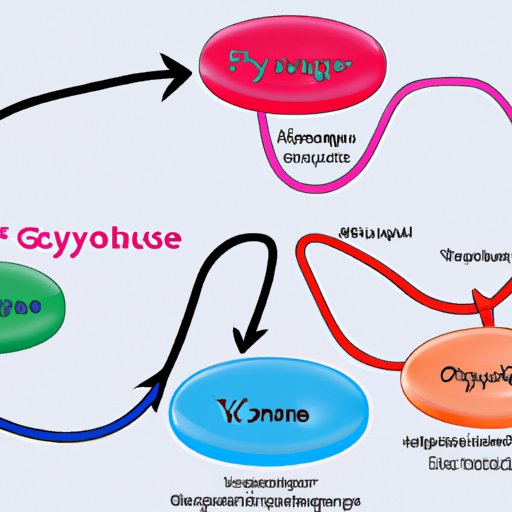
Exploring the Product of Glycolysis: A Comprehensive Guide
Glycolysis is one of the most important biochemical reactions that occur in living organisms. This metabolic process is responsible for breaking down glucose molecules into simpler compounds to produce energy. But what is the product of glycolysis?
In this guide, we’ll explore the chemistry behind glycolysis and its resulting products. We’ll take a closer look at the end product of glycolysis and how it is used in metabolic processes. By the end of this article, you’ll have a better understanding of how glycolysis works and why it is so important for our bodies.
What is Glycolysis? Understanding its Outputs
Glycolysis is a metabolic pathway that converts glucose into energy. It is a multi-step process that occurs in the cytoplasm of cells and involves the breakdown of glucose molecules into smaller compounds. The end product of glycolysis is pyruvate, which can then be used in other metabolic processes.
The first step of glycolysis is the breakdown of glucose into two three-carbon molecules called glyceraldehyde 3-phosphate (G3P). These molecules are then converted into two additional three-carbon molecules called 1,3-bisphosphoglycerate. From there, the molecules are further broken down into two molecules of pyruvate. This process releases energy, which can then be used by the cell for various functions.

From Glucose to Pyruvate: How Glycolysis Works
To better understand the product of glycolysis, it’s important to look at the process in more detail. Glycolysis consists of 10 steps that involve the breakdown of glucose molecules into pyruvate. At each step, different enzymes catalyze the reaction and energy is released.
During glycolysis, several intermediary compounds are formed, including fructose 1,6-bisphosphate, dihydroxyacetone phosphate, glyceraldehyde 3-phosphate, and 1,3-bisphosphoglycerate. These compounds help facilitate the reaction and allow for the conversion of glucose into pyruvate.
Taking a Closer Look at the Product of Glycolysis
At the end of the process, two molecules of pyruvate are produced. Pyruvate is an important compound that plays a role in numerous metabolic pathways. In some cases, it is converted into acetyl-CoA, which can then enter the citric acid cycle and result in the production of ATP. In other cases, it is converted into lactic acid or ethanol.
Pyruvate is also used in gluconeogenesis, which is the process of converting non-carbohydrate sources into glucose. This is important for organisms that need to maintain a constant level of blood sugar, such as humans. Finally, pyruvate can be used to synthesize fatty acids, which are essential for the formation of cell membranes and hormones.

Getting to Know the End Product of Glycolysis
So what exactly is pyruvate? Pyruvate is a three-carbon molecule that is formed from the breakdown of glucose during glycolysis. It is important for the metabolism of sugars and fats, as well as for the production of energy. Pyruvate can be converted into other compounds, such as acetyl-CoA, lactic acid, and ethanol.
Pyruvate is also involved in gluconeogenesis, which is the process of converting non-carbohydrate sources into glucose. This is important for maintaining a steady level of blood sugar in the body. Finally, pyruvate is involved in the synthesis of fatty acids, which are essential for the formation of cell membranes and hormones.
Conclusion
Glycolysis is one of the most important biochemical reactions that occur in living organisms. This metabolic process is responsible for breaking down glucose molecules into simpler compounds to produce energy. The end product of glycolysis is pyruvate, which can then be used in other metabolic processes.
Pyruvate is an important compound that plays a role in numerous metabolic pathways. It is involved in the production of energy, gluconeogenesis, and the synthesis of fatty acids. By understanding the product of glycolysis, we can gain a better understanding of how our bodies use energy and nutrients to function properly.


